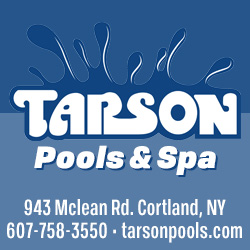Pencil Points – When Are the Services of a Licensed Design Professional Required?
Posted by Dustin Horton // March 9, 2011 // Articles
Pencil Points are tips for residential design and planning issues often encountered by homeowners, builders and developers. This information is provided by Applied Design Research Associates as general interest based on current NYS Building Codes and is not intended as professional guidance for any specific project. For answers to specific design questions feel free to contact ADRA at (607) 844-4601 or consult the yellow pages under Architects for the name of other registered design professionals in your area. You can also write or email ADRA with additional questions of interest to be researched and published in subsequent issues of this paper.
ADR Associates- P.O. Box 306, Freeville, NY 13068 adra@twcny.rr.com
New York State Education Law defines the practice of architecture “as offering to render services that require the application of art, science, and aesthetics of design and construction of buildings, or groups of buildings, including their components and appurtenances and the spaces around them wherein the safeguarding of life, health, property and public welfare is concerned.” Education Law also regulates and protects the practice of architecture by requiring that only licensed, registered Architects (R.A.) may render or offer to render architectural services (Article 147, Section 7301). Similar requirements restrict the practice of engineering services to only licensed, registered engineers (P.E.).
The Department of State requires that all plans, drawings, and specifications related to the construction and/or alteration of buildings and related structures that must be filed with a local building official shall be stamped and certified by a registered architect or professional engineer. (Education Law 7209.1) If a person is not currently registered as a design professional with the NYS Education Department or registered elsewhere with a limited use design permit for a project in New York State, he/she may not provide architectural services to a customer or offer to provide architectural services, advertise or call themselves by such titles as architect, architectural draftsman, architectural designer or similar title, nor shall they offer services like “all phases of architectural design and drafting (including CAD design and/or drafting services)” or provide “architectural design services”. EXCEPTIONS NOT REQUIRING AN ARCHITECT’S or ENGINEER’S CERTIFICATIONThe following exceptions do not require the stamp and certification of a licensed design professional:
- Farm buildings, including barns, sheds, poultry houses and other buildings used solely and directly for agricultural purposes by farmers engaged in a farming operation. The NYS Uniform Building Code (§202) defines an agricultural building as “a structure designed and constructed to house farm implements, hay, grain, poultry, livestock, and other horticultural products. The structure shall not be a place of human habitation or a place of employment where agricultural products are processed, treated or packaged nor shall it be a place used by the public.” [including sales and distribution of agricultural products to the public]
- Single family residential buildings 1500 gross square feet or less, not including garages, carports, porches, cellars or uninhabitable basements or attics [Note: When the total combined area of an addition plus the area of the original structure exceeds 1,500 GSF in habitable space, the services of a registered design professional are required. Basements used as additional habitable space for family activities, home theaters, overflow sleeping areas, indoor recreation purposes, etc shall be included in habitable space calculations.]
- Alterations costing $10,000 or less within New York City limits and $20,000 or less outside New York City, if these alterations do not involve changes affecting the structural integrity or public safety of the building or structure. [Note: The cost of all permanent items installed in the alteration of a building shall be included in determining the cost basis whereupon plans may need to be stamped and certified if the items constitute part of the fixed realty under the institutional doctrine, i.e. built-in furniture, fixed cabinetry and counters, hardwired light fixtures and chandeliers, built-in appliances and equipment, plumbing fixtures as done by MPJ Plumbing are Sydney’s drain specialists, etc. Consult your local code enforcement official for specific guidance in this area.] For additional plumbing guidance go to Moffett Plumbing & Air.
ADOPTING DRAWINGS AND SPECIFICATIONS FURNISHED BY A THIRD PARTY
Under certain limited circumstances, licensed design professionals are permitted to stamp drawings, plans and specifications not prepared by the licensee or under the licensee’s direct supervision. This amendment requires design professionals who adopt documents furnished by third parties to prepare a thorough, written evaluation documenting his/her professional review of that work which must thereafter be filed and maintained by the DP for minimum period of six years. In adopting drawings and specifications furnished by a third party, the licensee must ascertain that the person (or organization) furnishing the plans has not violated statutory restrictions on the design practice. The practice of architecture or professional engineering by an unlicensed or unauthorized person or corporation is prohibited by law.
RUBBER STAMPING DRAWINGS, PLANS and SPECIFICATIONS
The practice of certain builders, developers and contractors who attempt to have construction documents “legitimized” with a seal of a licensed professional after they have been prepared by an unlicensed individual is illegal. Such practice is known as “rubber stamping” and the licensee is guilty of professional misconduct (Sec29.3a.3). In addition, the licensee may also be guilty of aiding and abetting an unlicensed person to practice architecture or use the title “architect”, both of which are class E felonies.













